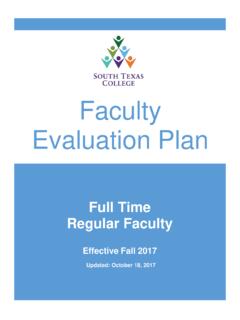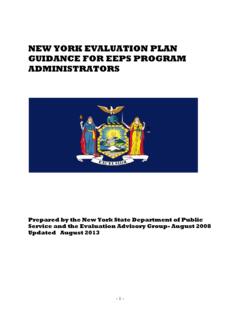Transcription of T OF - actev.nist.gov
1 1 TABLE OF CONTENTS Background4 Overview4 2. Tasks and Conditions5 Tasks5 Activity Detection (AD)5 Conditions5 evaluation Type5 ActEV-PC open leaderboard evaluation (Phase 1)5 ActEV-PC Independent evaluation (Phase 2)5 Protocol and Rules5 Required evaluation Condition6 3. Data Resources7 4. System Input7 File Index7 Activity Index8 5. System Output9 System Output File for Activity Detection Tasks9 Validation of Activity Detection System Output10 6. Activity Detection Metrics10 Activity Detection Task11 Activity Instance occurrence detection per activity (Primary Metric)11 System Information14 System Description14 System Hardware Description and Runtime Computation14 2 Speed Measures and Requirements14 Training Data and Knowledge Sources15 System References15 APPENDIX15 Appendix A: Submission Instructions15 Appendix B: SCHEMAS17 JSON Schema for system output file17 Appendix C.
2 Infrastructure (Hardware and Virtual Machine specification)17 Scoring Server17 NIST Independent evaluation Infrastructure Specification18 Independent evaluation Infrastructure and Delivery of Software18 Appendix D: Definitions of Activity and Required objects [6]18 Appendix E: Intellectual Property22 Appendix F: Who is Eligible to Participate?23 Appendix G: Limitation of Liability and Additional Information25 Additional Information25 Payment Terms26 Cancelation26 References26 Disclaimer26 3 Background The volume of video data collected from ground-based video cameras has grown dramatically in recent years.
3 However, there has not been a commensurate increase in the usage of intelligent analytics for real-time alerting or triaging of video. Operators of camera networks are typically overwhelmed with the volume of video they must monitor, and cannot afford to view or analyze even a small fraction of their video footage. Automated methods that identify and localize activities in extended video are necessary to alleviate the current manual process of monitoring by human operators and provide the capability to alert and triage video that can scale with the growth of sensor proliferation. Overview The Activities in Extended Video Prize Challenge (ActEV-PC) seeks to encourage the development of robust automatic activity detection algorithms for a multi-camera streaming video environment.
4 Challenge participants will develop activity detection and temporal localization algorithms for 18 activities that are to be found in extended videos and video streams. These videos contain significant spans without any activities and intervals with potentially multiple concurrent activities. ActEV-PC will contain two phases an open leaderboard evaluation (Phase 1) and an independent evaluation (Phase 2). Phase 1 will be run as an open activity detection evaluation where participants will run their algorithms on provided videos on their own hardware and submit results to the challenge scoring server of the National Institutes of Standards and Technology (NIST).
5 This phase will serve as a qualifying stage where the top 8 participants will proceed to phase 2. For this evaluation plan , an activity is defined to be one or more people performing a specified movement or interacting with an object or group of objects . Activities are determined during annotations and defined in the data selections below. Each activity is formally defined by four elements: Element Meaning Example Definition Activity Name A mnemonic handle for the activity Open Trunk Activity Description Textual description of the activity A person opening a trunk Begin time rule definition The specification of what determines the beginning time of the activity The activity begins when the trunk lid starts to move End time rule definition The specification of what determines the ending time of the activity The activity ends when the trunk lid has stopped moving 4 2.
6 Tasks and Conditions TASKS In the ActEV-PC evaluation , there is one Activity Detection (AD) task for detecting and localizing of activities . ACTIVITY DETECTION (AD) For the Activity Detection task, given a target activity, a system automatically detects and temporally localizes all instances of the activity. For a system-identified activity instance to be evaluated as correct, the type of activity must be correct and the temporal overlap must fall within a minimal requirement as described in Section 6. CONDITIONS The ActEV-PC 2018 evaluation will focus on the forensic analysis that processes the full corpus prior to returning a list of detected activity instances.
7 evaluation TYPE For the ActEV-PC evaluation , there are the two evaluation phases; a self-reported leaderboard stage and an independent prize evaluation for the top leaderboard participants. ACTEV-PC OPEN LEADERBOARD evaluation (PHASE 1) For open leaderboard evaluation , the challenge participants should run their software on their systems and configurations and submit the system output defined by this document (see Section 5) to the Prize Challenge section of the NIST ActEV Scoring Server ( ). ACTEV-PC INDEPENDENT evaluation (PHASE 2) Subsequent to the leaderboard evaluation , the challenge participants that proceed to the prize evaluation phase will be provided their runnable system to NIST using the forthcoming evaluation Container Submission Instructions.
8 NIST will evaluate system performance on sequestered data using NIST hardware--see the details in Appendix C for the hardware infrastructure. PROTOCOL AND RULES For Intellectual Property [see Appendix E: Intellectual Property]. For Who is Eligible to Participate? [see Appendix F: Eligible to Participate? ] 5 For Limitation of Liability [see Appendix G: Limitation of Liability] The challenge participants can train their systems or tune parameters using any data, but they must inform NIST that they are using such data and provide appropriate detail regarding the type of data used. However, the only VIRAT data that may be used by the systems are the ActEV-provided training and validation sets, associated annotations, and any derivatives of those sets ( , additional annotations on those videos).
9 All other VIRAT data and associated annotations may not be used by any of the systems for the ActEV evaluations. The challenge participants agree not to probe the test videos via manual/human means such as looking at the videos to produce the activity type and timing information from prior to the evaluation period until permitted by NIST. All machine learning or statistical analysis algorithms must complete training, model selection, and tuning prior to running on the test data. This rule does not preclude online learning/adaptation during test data processing so long as the adaptation information is not reused for subsequent runs of the evaluation collection.
10 For ActEV-PC evaluation (phase 2), NIST will run the challenge participants system on one of the nodes of the NIST evaluation Infrastructure (see Appendix C). The system may not be more than 20 times slower than realtime for 18 target activities. REQUIRED evaluation CONDITION For ActEV-PC Leaderboard evaluation (Phase 1), the conditions can be summarized as shown in Table below: Phase 1 evaluation Required Task AD Target Application Forensic Systems evaluation Type Self-reported Leaderboard evaluation Submission Primary (see the details in Appendix A for Submission Instructions) Data Sets VIRAT-V1 VIRAT-V2 For ActEV-PC Independent evaluation (Phase 2), the conditions can be summarized as shown in Table below.









